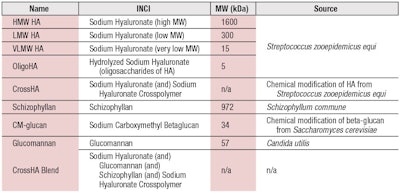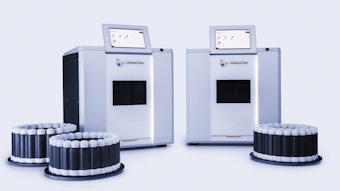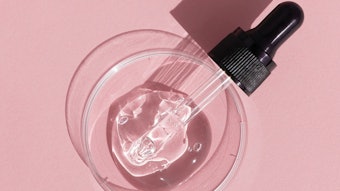
Read the full article in the September 2021 digital edition. . .
An increase in air pollution (AP) in recent years has posed major concerns, including adverse effects on human health. Air pollutants (APs) can affect many organs and tissues in the human body including the skin, where they may cause visible structural and compositional changes. The typical manifestation of AP-induced skin damage is an accelerated skin aging phenotype, loss of elasticity, formation of wrinkles and pigmented spots, increased sebum production rate, skin barrier disruption and impaired wound healing. AP also can contribute to the development or exacerbation of various skin diseases such as acne, atopic dermatitis, psoriasis and skin cancer.1, 2
As consumer awareness of the negative effects of AP on skin has increased, demand for anti-pollution cosmetic products has grown. In relation, technologies have been introduced to counteract the negative effects of pollution although many well-established cosmetic actives also possess anti-pollution potential beyond their traditional uses. Several of these are evaluated here.
In this study, the anti-pollution effects of common cosmetic polysaccharides and their derivatives were tested. These included: hyaluronic acid (HA) of different molecular weights (MW), a crosslinked HA (crossHA), schizophyllan, glucomannan and carboxymethyl beta-glucan (CM-glucan). In addition, a blenda of high and low (300 kDa) MW HA, crossHA, schizophyllan and glucomannan (crossHA blend) was evaluated both in solution and formulated in an exemplary cosmetic serum and cream.
As an experimental model, skin explants were treated with the test substances and exposed to cigarette smoke (CS) as a representative type of AP containing high concentrations of all the major classes of pollutants. The levels of reactive oxygen species (ROS), extent of skin barrier lipid peroxidation and gene expressions of the pro-inflammatory cytokine IL-6 were determined.
Materials and Methods
Ingredients and formulas: All cosmetic ingredients evaluated in this study are summarized in Table 1. The compositions of the described test cosmetic serum and cream containing the crossHA blend are shown in Formulas 1 and 2, respectively.
Anti-pollution test protocol: The described experiments were performed using skin specimens excised from the inner side of porcine cadaver auricles obtained as waste material. The skin explants were incubated in Franz cells with the tested substances dissolved in phosphate buffered saline (PBS) (or in a serum and cream, in the case of the crossHA blend) at 37°C for 24 hr. After incubation, the skin samples were washed, air-dried for 1 hr and exposed to CS from four cigarettes for 10 min, during which all cigarettes completely burned (see Figure 1). Then, skin samples were incubated for 1 hr at 37°C and used for further experiments.
Lipid peroxidation by TBARS assay: Six tape-strips were applied to the top of the skin explants prepared as described. Lipids were extracted from the strips in methanol, mixed with 15% trichloroacetic acid (TCA) and 0.67% thiobarbituric acid (TBA), incubated for 20 min at 95°C, cooled on ice and centrifuged. Fluorescence of the cleared supernatants was measured at ex/em 532/553. Six empty discs were used as the blank. The values were normalized to the weight of the stripped material as determined by weighing the strips before and after stripping.
IL6 gene expression by qRT-PCR: The skin explants were prepared as described. The gene expressions of IL6 and RPL13A (reference gene) were then determined in heat-separated epidermis (80 sec in 60°C PBS) by quantitative real-time RT-PCR using specific gene expression assaysb. The resulting data was analyzed using the 2–Δ ΔCt method.
ROS by DCFH-DA method: After incubating the skin explants with the tested substances, the samples were washed and incubated with 30 µM 2,7-dichlorofluorescein-diacetate (DCFH-DA) in PBS for 3 hr at 37°C, then rinsed with PBS and air-dried for 1 hr. Following this, CS was applied as described and the samples were incubated for 30 min at 37°C. The epidermis was separated from the dermis by heat (80 sec in 60°C PBS) and observed using a fluorescent microscope.
Statistical analysis: The student’s t-test was used for the statistical evaluation of results.
. . .Read more in the September 2021 digital edition. . .
References
- Araviiskaia, E., Berardesca, E., et al. (2019). The impact of airborne pollution on skin. J Eur Acad Dermatol Venereol 33(8) 1496-1505.
- Krutmann, J., Liu, W., et al. (2014). Pollution and skin: From epidemiological and mechanistic studies to clinical implications. J Dermatol Sci 76(3) 163-8.
a PolluProtect (INCI: Sodium Hyaluronate (and) Glucomannan (and) Schizophyllan (and) Sodium Hyaluronate Crosspolymer) is a product of Contipro a.s.
b TaqMan Real-time PCR












